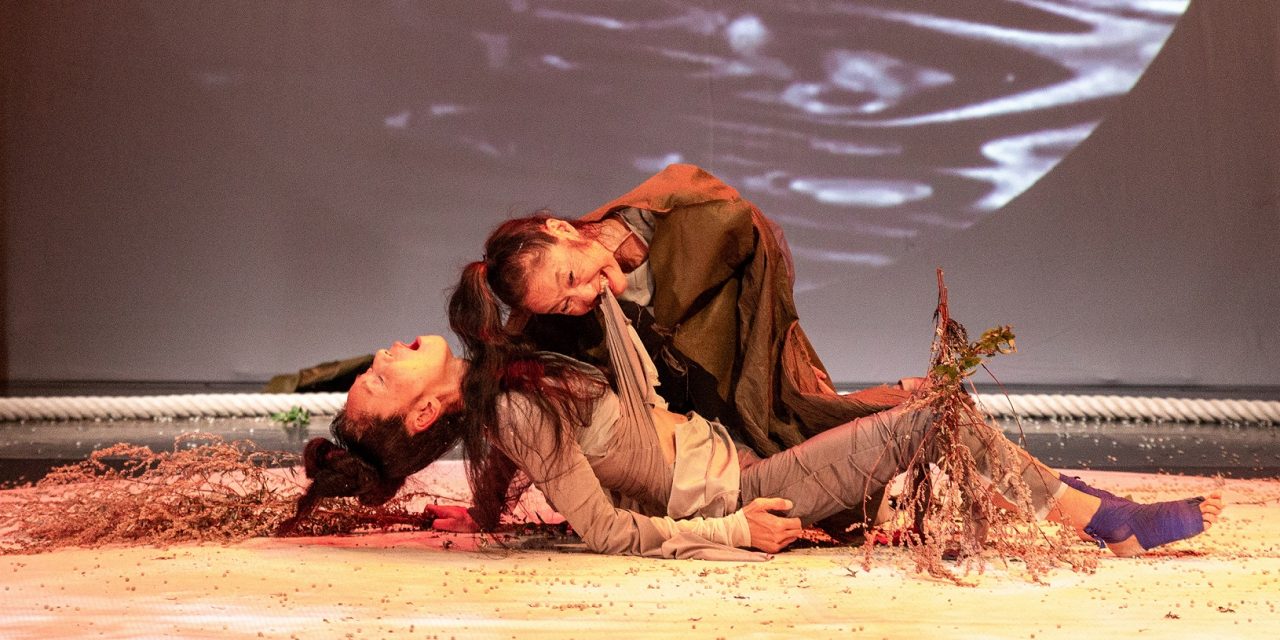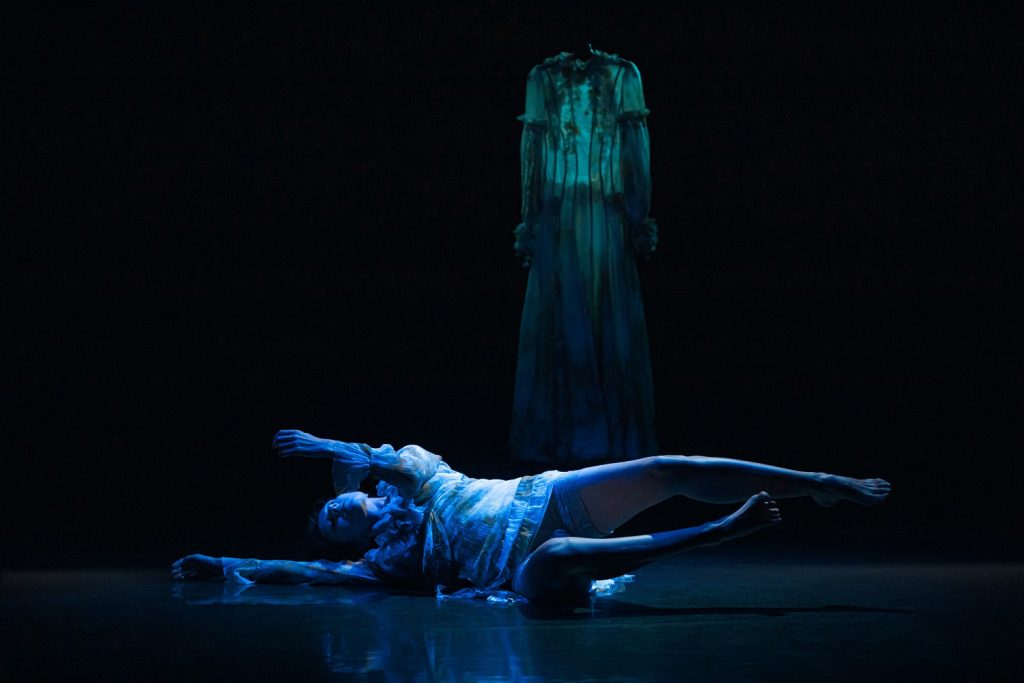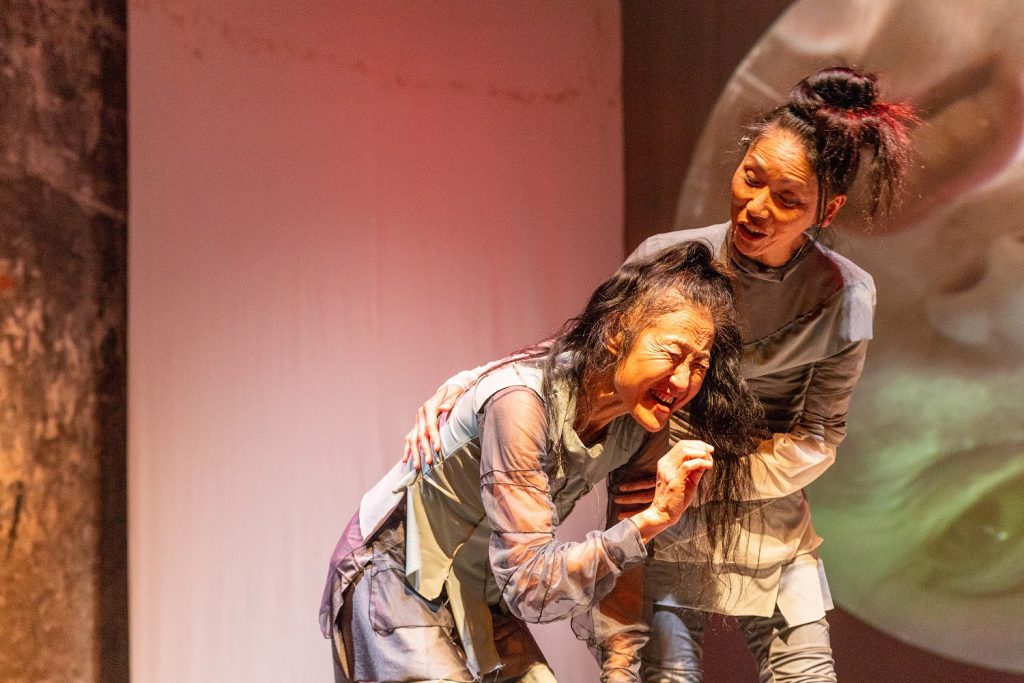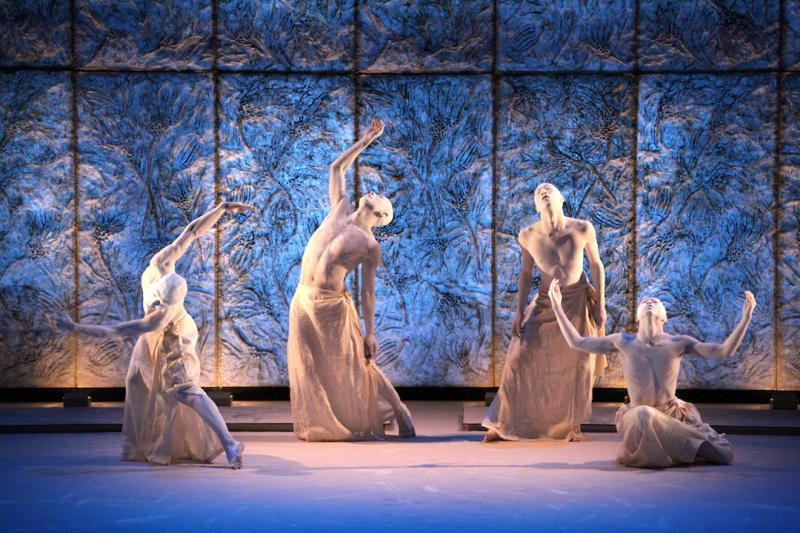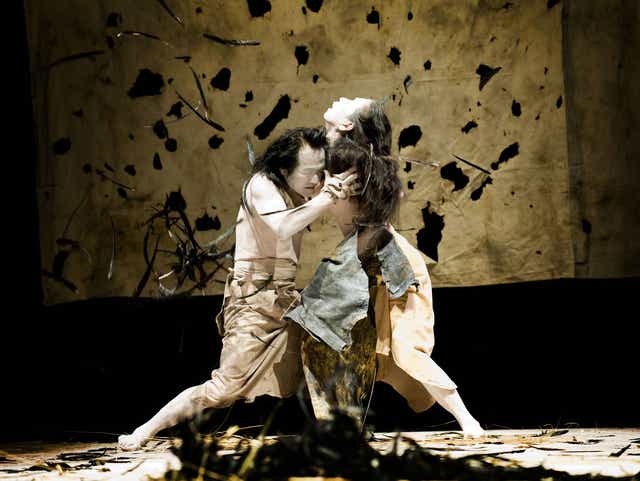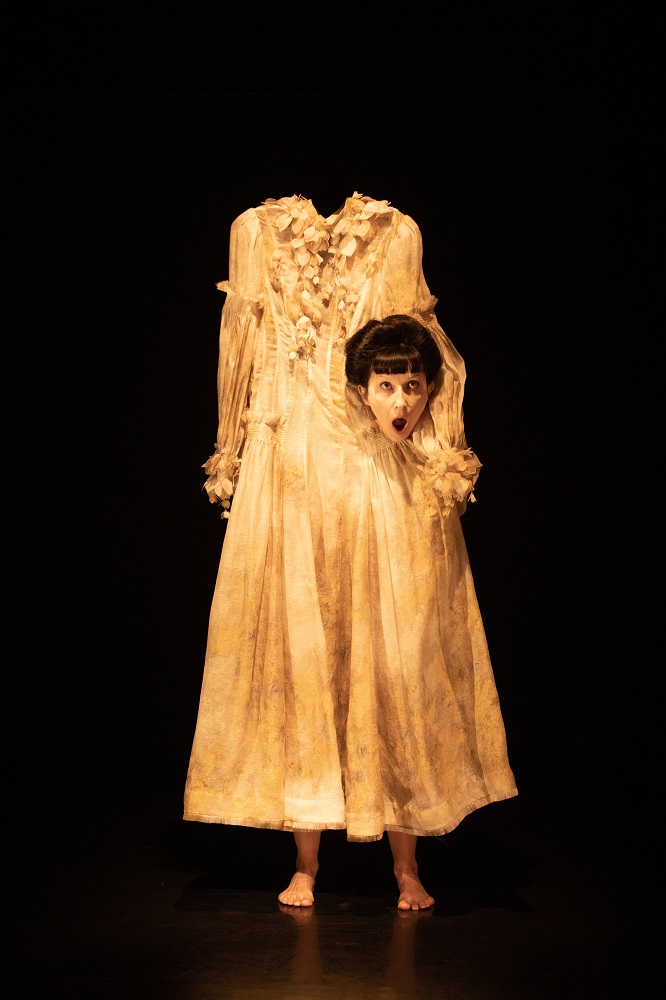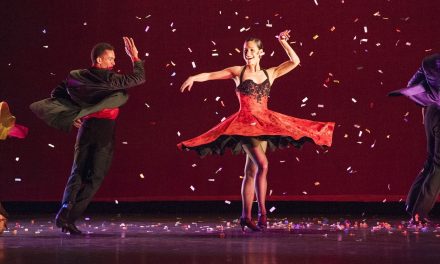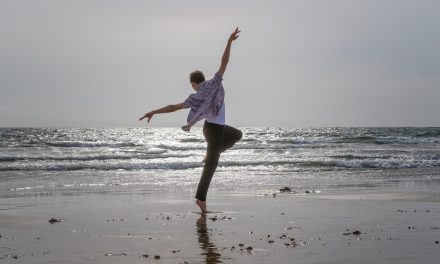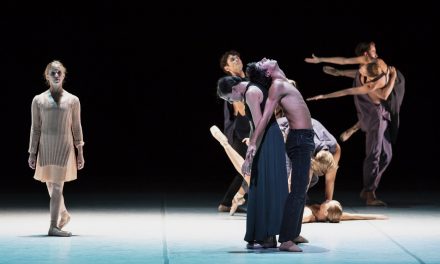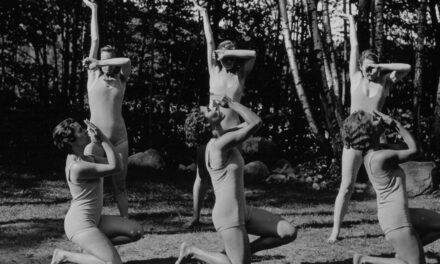Beginning October 1, 2021, the New York Butoh Institute will present a free virtual series at vimeo.com/Vangeline, underlining the vast contribution women have made to the art of butoh. Women Defining Butoh, displaying recent works by two generations of women butoh pioneers, will live stream and also be available on-demand for a limited time. The calendar of festivities is available at vangeline.com/calendar-of-upcoming-events. The series will culminate with live performances at Triskelion Arts, October 27-29, 2021, at 8pm and October 30, 2021 at 7pm. Tickets for the in-person performances are $18/$22.
The series will highlight female pioneers Natsu Nakajima, Saga Kobayashi, Yumiko Yoshioka, Minako Seki, and Yuko Kaseki. Following butoh’s migration East to West, our series follows the spread of butoh in the US via Hiroko Tamano, who settled in San Francisco in 1980, and Joan Laage/Kogut Butoh, who first introduced butoh to Seattle in the ’90s. Women Defining Butoh celebrates the legacy of these butoh legends with performances by the all-female troupe DAIPANbutoh Collective (Seattle), Mexican dancer Eugenia Vargas, Chicago-based dancer Cristal Sabbagh, and a live performance by New York-based company Vangeline Theater at Triskelion Arts.
The festival will feature timeless butoh works; other pieces are more rooted in contemporary culture, as reflected in a haunting piece on gun violence and war by Yuko Kaseki (Shoot Jeez My Gosh); Commedia Futura’s retelling of the bombing of Hiroshima and Nagasaki (Zero); and DAIPANbutoh Collective’s playful commentary on corporate culture (Corporate). “Dancing a line between the everyday, the divine, the personal, and the political,” Cristal Sabbagh challenges definition in Sowing Asychronicities; and with Eternity 123, Vangeline traces the symbolic journey of women’s emancipation across time.
The series begins with the New York Butoh Institute presenting Lifetime Achievement Awards to Natsu Nakajima, Saga Kobayashi and Hiroko Tamano. Women Defining Butoh was made possible with support from the National Endowment for the Arts, and by public funds from the New York City Department of Cultural Affairs in partnership with the City Council, and the New York State Council on the Arts with the support of Governor Andrew M. Cuomo and the New York State Legislature.
“Butoh is alive and well today,” says Vangeline, curator of this series, “and it is largely due to the pioneering work of women since the ’60s. These women are still very active today and are vital contributors to butoh’s global success. Their legacy endures; with this series, we celebrate women’s achievements and hope to inspire the next generation of dance-makers.”
A touch of butoh background:
Originally named ‘ankoku butoh’ or ‘dance of utter darkness’, butoh began in Japan by Tatsumi Hijikata in 1959. This new art form co-founded by Hijikata’s and Yoshito Ohno is said to have been born out the turmoil and chaos resulting in a loss of identity following WWII. This loss inspired them to reexamine not only the Japanese traditions and culture, but western dance and the highly codified Japanese Noh drama and Japanese classical dance, Nihon Buyo as well. While butoh was born out of these rejections, there are pedagogical links between butoh’s founders and German Expressionist dance. Hijikata also drew on the writings of Jean Genet and Antonin Artaud, among others.
Through the years, there have been numerous offshoots of butoh including the group known as Sankai Juku. Its leader, Ushio Amagatsu, was formerly a member of Dairakuda-kan, directed by Maro Akaji, an actor who worked with Hijikata early on. In 2000 Sayoko Onishi founded the International Butoh Academy at the presence of master and butoh founder Yoshito Ohno. Other artists influenced by Hijikata and Ohno have formed their own groups. That included Japanese Canadians Jay Hirabayashi of Kokoro Dance and Denise Fujiwara. Among those in Europe are SU-EN Butoh Company (Sweden), Marie-Gabrielle Rotie,[24] Kitt Johnson (Denmark), Vangeline (France), and Katharina Vogel (Switzerland).
LEIMAY (Brooklyn) emerged 1996-2005 from the creative work of Shige Moriya, Ximena Garnica, Juan Merchan, and Zachary Model at the space known as CAVE. Eseohe Arhebamen, a princess of the Kingdom of Ugu and royal descendant of the Benin Empire, is the first indigenous and native-born African butoh performer. She created a style called “Butoh-vocal theatre” which incorporates singing, talking, mudras, sign language, spoken word, and experimental vocalizations with butoh after the traditional dance styles of the Edo people of West Africa. Other groups include COLLAPSINGsilence Performance Troupe (San Francisco) and the Flesh & Blood Mystery Theater founded by Bob DeNatale. Many of our readers may be familiar with Japanese artists Eiko Otake and Takashi Koma Otake, generally known as Eiko & Koma founded in 1972.
########
Virtual Schedule of Events for Women Defining Butoh
October 1-3, 2021: Natsu Nakajima, Saga Kobayashi, Hiroko Tamano. Lifetime achievement awards. Natsu Nakajima in Ihaien, Saga Kobayashi in In Being Jealous of a Dog’s Veins, Hiroko Tamano in Dream Bodies.
October 7-9, 2021: Zero with Yumiko Yoshioka and Minako Seki.
October 14-16, 2021: Yuko Kaseki in Shoot Jeez My Gosh, Eugenia Vargas in Umbria.
October 19-24: Cristal Sabbagh in Sowing Asynchronicities; Joan Laage in Earth Tomes, DAIPANbutoh Collective in Corporate.
October 25-30, 2021: Anzu Furuzawa in Four Dances, Vangeline Theater (live performances at Triskelion Arts).
Virtual performances will live stream at vimeo.com/Vangeline and will also be available on-demand for a limited time. The calendar of festivities is available at vangeline.com/calendar-of-upcoming-events. The series will culminate with live performances at Triskelion Arts, October 27-29, 2021, at 8pm and October 30, 2021 at 7pm. Tickets for the in-person performances are $18/$22 and available HERE.
To learn more about Vangeline please visit her website. www.vangeline.com.
Written and compiled by Jeff Slayton. Thank you to Michelle Tabnick Public Relations.
Featured image: Women Defining Butoh – ZERO with Yumiko Yoshioka and Minako Seki – Photo by Pietro Jorge

